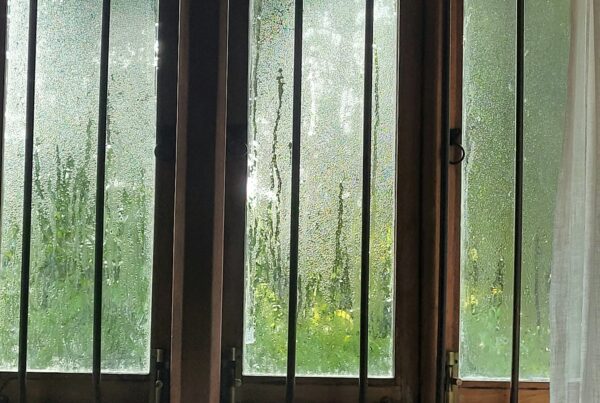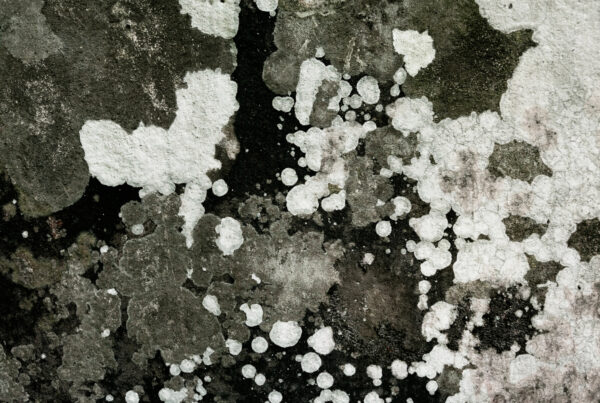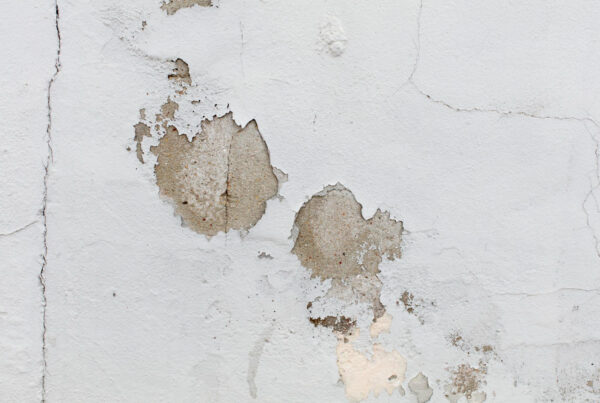Rotted wood threatens a property’s structural safety and requires immediate attention to prevent costly damage from spreading throughout the building. Learning how to identify wood rot types, understand repair methods, and choose appropriate rot treatment can save your property from extensive structural problems.
We cover how to assess wood rot damage, explore repair techniques, understand when wood hardener and filler work versus professional intervention, and understand recommended prevention strategies.
What Types of Wood Rot Affect Your Property?
Wood rot comes in two primary types of rot affecting UK properties: wet rot and dry rot. Each requires different treatment approaches and causes distinct damage patterns.
Wet rot develops in timber with moisture content and stays localised where dampness persists. This decay appears as darkened, spongy timber that feels soft and may develop a musty smell. The amount of moisture required for wet rot affects external joinery, window frames, and structural timbers exposed to persistent moisture.
Dry rot is more destructive, spreading beyond the initial moisture source through specialised fungal strands. This aggressive fungus attacks timber throughout your property, causing cuboidal cracking patterns and producing rust-coloured fruiting bodies. The effects of dry rot include severe structural weakening and extensive timber damage. The distinction determines the best wood rot repair strategy and rot treatment urgency.
How Do You Assess Wood Rot Damage in Your Property?
Proper assessment is the foundation of successful wood rot repair. You need to determine the extent of the damage, identify the moisture source, and evaluate whether the affected timber retains structural integrity or requires wood filler repairs. Physical assessment techniques include:
- Probe testing – Use a sharp knife to test timber hardness and identify areas where rotted wood has lost structural strength
- Moisture measurement – Electronic meters reveal elevated moisture levels, indicating ongoing decay and fungal damage
- Visual inspection – Look for signs of dry rot, including discolouration, surface cracking, fungal growth, or structural deformation
- Tap testing – Sound timber produces clear tones; rotted wood creates dull, hollow sounds
- Load assessment – Evaluate whether the affected timber still carries structural loads safely
Specialists use advanced diagnostic equipment to map the full extent of rot damage. These assessments reveal hidden decay that visual inspection cannot detect, preventing partial repairs that allow the rot to continue spreading.
The experienced team at Refresh conducts evaluations to identify all affected areas and determine the best timber repair strategies.
When Can You Repair Wood Rot Yourself?
Small-scale wet rot affecting non-structural timber may respond to careful DIY repair using wood hardener and wood filler, provided you address the underlying moisture source first.
DIY-Suitable wood rot scenarios include:
- Surface wet rot – Decay affecting only outer timber layers is treatable with wood hardener and filler
- Localised damage – Small areas that haven’t spread beyond immediate moisture sources
- Accessible locations – Areas where you can easily reach all affected timber for complete treatment
- Non-load bearing elements – Decorative features where failure won’t compromise building safety
- Minor joinery repairs – Window sills, door frames, or external trim showing early-stage decay, suitable for wood filler application
However, DIY repair requires honest skill assessment, appropriate safety equipment, quality materials, and wood preservative. Incomplete repairs lead to recurring problems that prove more expensive than professional treatment.
What Does Professional Wood Rot Repair Involve?
Professional wood rot repair delivers comprehensive solutions that address visible damage and underlying causes to prevent future decay and fungal damage.
Below are professional repair process steps:
- Structural assessment – Moisture mapping and invasive testing determine the full extent of damage and moisture levels.
- Moisture elimination – Damp proofing works, roof repairs, or ventilation eliminate conditions enabling rot.
- Timber removal – Damaged sections are cut out with temporary support, maintaining structural integrity.
- Replacement installation – Pre-treated, seasoned timber with wood preservative resists future decay.
- Preservative treatment – Professional treatments penetrate wood fibres, providing long-term wood protection.
The proven expertise of Refresh ensures repairs meet structural engineering requirements and building regulations for effective timber restoration.
How Much Does Professional Wood Rot Repair Cost?
Wood rot repair costs depend on the extent of damage, structural complexity, and underlying moisture problems. Structural repairs are often the largest cost component, especially where load-bearing elements require replacement rather than simple wood filler repairs.
Moisture elimination works constitute another expense, especially where comprehensive waterproofing becomes necessary to control the amount of moisture affecting timber elements. However, addressing root causes is essential for preventing expensive repeat treatments.
Professional repair is a sound investment compared to escalating structural failure costs. Early intervention preserves more original timber and minimises disruption.
Can Wood Rot Repair Be Combined with Other Improvements?
Strategic timing of wood rot repair alongside other building works improves efficiency and cost-effectiveness. Property owners undertaking renovations can achieve substantial savings by coordinating timber preservation works.
Roof repairs, window replacement, or external treatments provide ideal opportunities to address moisture problems contributing to wood decay. Woodworm treatment can be coordinated where properties suffer multiple timber preservation problems.
How Do You Prevent Future Wood Rot Problems?
Effective prevention focuses on moisture control and regular maintenance to create conditions that resist fungal damage. Controlling the amount of moisture in timber elements matters to prevent both types of rot.
Regular building maintenance prevents small moisture problems from developing into major rot issues requiring extensive timber repair. Annual roof inspections, gutter cleaning, and external pointing maintenance eliminate water penetration routes.
Adequate ventilation restricts condensation formation, which can trigger rot development. Subfloor voids, roof spaces, and enclosed areas need sufficient airflow to remove moisture before it accumulates and creates conditions for wood decay.
Restore Your Property with Expert Wood Rot Repair From Refresh
Rotted wood threatens a property’s structural integrity and market value, necessitating quick professional intervention. The experienced timber preservation specialists at Refresh combine advanced diagnostic techniques with proven repair methods to deliver complete restoration and long-term wood protection.
Our wood rot repair service integrates solutions to address visible damage and underlying moisture problems, preventing future decay. Property owners receive detailed assessments, transparent pricing, and results backed by decades of timber restoration experience. Contact us for expert assessment and professional repair solutions.



